Water Recycling Plant
Author: Jay Jung, P.E.
Design: 2019 - 2020
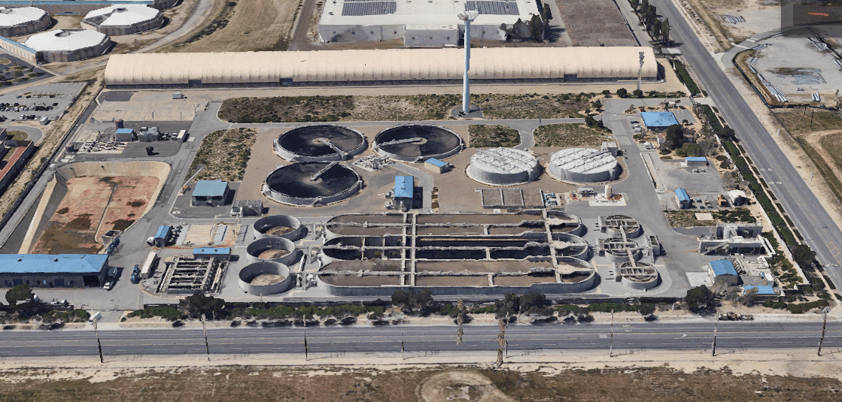
The Inland Empire Utilities Agency (IEUA) is a regional wastewater treatment agency and also provides reliable, quality water as a wholesale distributor of imported water throughout the Chino Basin. One of its wastewater plants, the Regional Water Recycling Plant No.4 (RP-4) is located in the city of Rancho Cucamonga. The facility services the areas of Rancho Cucamonga, Fontana and San Bernardino County. The plant’s wastewater treatment design capacity is 14 million gallons per day (mdg) and currently processes around 10 mgd of average daily flow.
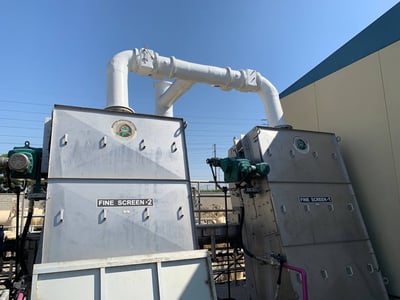
The existing perforated plate screens in the headworks were not performing well and required significant maintenance. The project objective was to replace the underperforming headworks screenings removal and handling equipment with more reliable equipment to increase screenings capture and to reduce the operations and maintenance (O&M) effort. LEE + RO, as design engineer of record, teamed with Stanek Constructors, as the prime contractor, for IEUA’s $1.9 million RP-4 Influent Screen Replacement design-build project.
Replacing the headworks screenings removal and handling equipment posed a few unique challenges on top of the typical challenges associated with a headworks rehabilitation project in an active wastewater treatment plant.
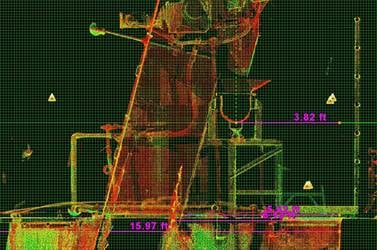
The influent channel walls are 18-feet deep, which raised concerns about their plumbness. This could, in turn, complicate the bar screen installation and warrant structural modifications. To determine the extent of this potential issue, a 3-D scan of the influent channel was performed.
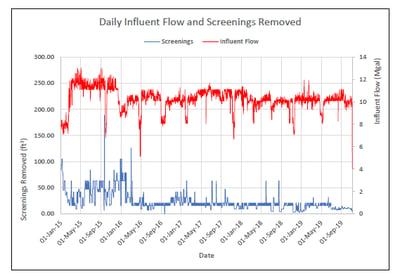
The plant was equipped with screenings removal equipment for decades, so it would only be logical to use the plant screenings off-haul data to size the new screenings handling equipment. However, the screenings off-haul data was deemed unreliable since the plant staff firmly believed that the existing screens were not performing up to par because of screenings bypassing the existing screens. This was confirmed when the existing screening data was analyzed to determine the average screenings removal rate and compared to industry standards and guidelines. To provide the IEUA RP-4 plant a greater degree of operational flexibility to handle the large seasonal screenings load variations, a conservative design guideline was used to size the new screenings handling equipment.
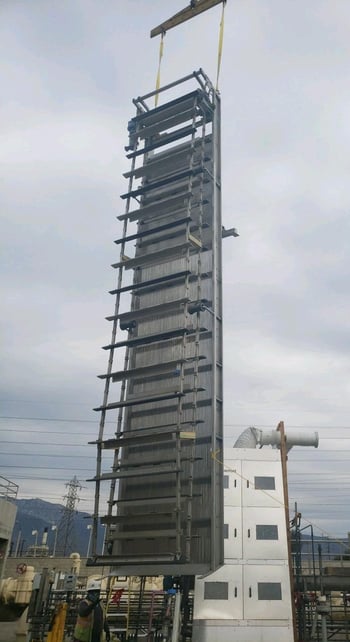
The industry commonly installs screens and screenings washer compactors from the same manufacturer to avoid complicated controls interface issues. It was not so straight forward on this project as the screens were pre-selected by IEUA and the design team and plant staff were not familiar with that manufacturer’s screenings washer compactor. To avoid potential controls interface issues, the pre-selected screen manufacturer’s screening washer compactor was thoroughly researched and compared to the screenings washer compactor equipment commonly used in the industry to confirm that it would be a good choice based on economic and non-economic factors.
This critical project for IEUA not only had a very tight schedule but also involved a significant number of stakeholders that needed to be heard. Successfully delivering this project was predicated on the teamwork between the LEE + RO Customer Service Manager, Project Manager, support team and the stakeholders. Our philosophy is to swiftly address project challenges by communicating and collaborating with all parties to ensure smooth coordination and swift resolution of issues to ensure that the project is delivered on time.
Through a combination of teamwork between a significant number of project stakeholders, research, and testing, the existing screenings removal and handling equipment was replaced resulting in the elimination of the poor performance issues and related maintenance burden on the plant staff at one of the most critical locations in the treatment process.